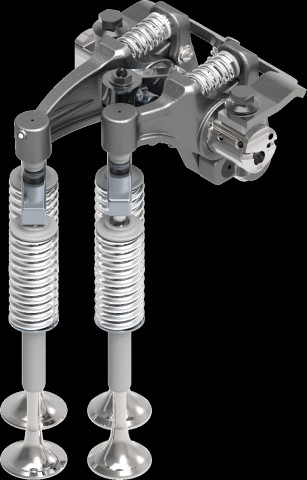Eaton’s Cylinder-Deactivation Technology Helps Commercial Vehicles Meet Emissions Regulations

Eaton’s CDA technology for commercial vehicles will be available by 2024
Power management company Eaton has proven in regulatory test cycles and real-world use its cylinder-deactivation (CDA) technology can play a key role in helping commercial vehicle manufacturers meet or exceed 2024 and 2027 U.S. emissions regulations. The announcement will be made at the North American Commercial Vehicle show (NACV) in Atlanta, Georgia, where Eaton will display a suite of technologies.
While other technologies can be combined to reduce both carbon dioxide (CO2) and nitrogen oxides (NOx) emissions, Eaton’s CDA stands out as the only single technology that can simultaneously reduce both greenhouse gases.
Eaton is a proven leader in CDA technology that is today utilized in more than 14 million passenger vehicles. Eaton’s CDA technology for commercial vehicles will be available by 2024 for single- and double-overhead cam engines, as well as cam-in-block engines.
“Eaton has a strong track record for leveraging cylinder deactivation in light-duty applications and is now applying that expertise to commercial vehicles,” said Karl Sievertsen, chief technology officer, Eaton’s Vehicle Group. “The testing we conducted validates that Eaton’s CDA technology can reduce emissions to help OEMs meet these coming standards.”
U.S. regulations mandate commercial vehicle manufacturers reduce CO2 by up to 20 percent by 2024 and up to 27 percent by 2027. Simultaneously, the Environmental Protection Agency (EPA) and California Air Resources Board (CARB) are expected to mandate reductions of NOx by approximately 70 percent by 2024 and up to 90 percent by 2027. Additionally, new low-load cycle and in-use requirements will be put in place. A similar order of magnitude is expected in European regulations in comparable timeframes.
Extensive testing of Eaton’s CDA technology conducted on heavy-duty diesel engines by the Southwest Research Institute (SwRI) in San Antonio, Texas, resulted in an up to 86 percent NOx reduction and a 3 to 8 percent CO2 reduction, depending on the test cycle. The results, which show real-world fuel economy improvement, are representative of the new low-load in-use compliance regulations.
As part of the same study, the current production aftertreatment was replaced with an improved, close-coupled system. The combination of Eaton CDA and improved aftertreatment met the expected NOx requirement for 2027. Eaton CDA technology increases the exhaust temperature at low load to allow the NOx aftertreatment system to quickly reach its peak efficiency range of 250–400°C.
Cylinder deactivation is just one of Eaton’s variable valve actuation (VVA) technologies. Other technologies include late intake valve closing and early exhaust valve opening, which modify valve operation to allow engine manufacturers various methods to maximize aftertreatment efficiency and minimize fuel consumption.
Combining Eaton’s CDA with Eaton’s line of decompression engine brakes can quickly shift individual cylinders from combustion to braking in a single engine cycle, allowing OEMs to optimize design packaging in a crowded valvetrain.
In addition, Eaton offers its Twin Vortices Series (TVS®) exhaust gas recirculation (EGR) pump, which reduces pumping losses and increases fuel economy by enabling the replacement of the variable geometry turbo (VGT) and EGR valve with a more efficient fixed geometry turbo (FGT).
“Having a suite of VVA technologies allows OEMs to combine different valvetrain control functions to best optimize both fuel economy and aftertreatment efficiency,” said Sievertsen.
Category: Engines & Drivetrains, Featured, General Update, News










